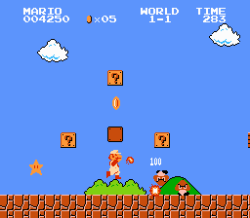
stuck in your head, yet?
You're welcome.
Let’s start at the heart of WFO and talk a little about Performance Management. This piece of WFO is the most common area where we see gamification introduced at the contact center. Performance Management ties all of your important contact center pieces together so you can see the big picture. You can most impact your customers by having a strong performance management process in place because you are seeing results from all angles, all systems.
With that said, there are five common reasons Performance Management processes fail:
- Not aligned throughout the organization
- Not supported from leadership
- Not structured with a documented process for consistency
- Not informed and/or discussed with all employees
- Not evolving or changing as business and employee needs change
And as a bonus - a 6th reason it fails: Not actionable!
Agents play the largest part in whether a performance management process is successful. However, they face major challenges on a regular basis beginning with the contact center being a complicated environment and can feel disconnected. Agents feel this disconnect, customers feel it, and ultimately your company will feel it – through agent attrition, customer churn, and reduced revenue. You have likely heard the term “the left hand doesn’t know what the right hand is doing” which can, unfortunately, be attributed to the multichannel contact center. Today’s contact centers handle a LOT of channels accompanied by additional applications and systems for our agents to use. On average an agent needs to access 5 different applications to help a single customer!
Another common challenge for today’s agent is disparate data. Contact center data is in many different systems and/or aggregated by multiple providers that don’t always get along. We are seeing a trend in the market where more contact centers want their systems connected through a single provider, but until that happens agents are often accessing many systems on top of the multichannel platform.
In addition to a complicated environment and disparate data we have begun holding agents accountable to multiple metrics. Every webinar I am on it seems I hear of a new metric that we should all be focusing on and the agents have to concern themselves with… First it was NPS, then it was Customer Experience Indicators, now we are hearing about the customer journey and the metrics to measure success along that road. How often are agents really updated on what metrics really matter? Unfortunately, too many of our contact center dashboards and scorecards have 15-25 metrics! We need to move to scorecards that are more actionable and consumable for agents which offer a reasonable chance to achieve.
The last agent challenge I wish to address is the lack of visibility for the agent into their performance data on a real-time or even historical basis. They rely on supervisors and managers to share those details as they become available. However, in this more complicated contact center world, the roles of managers and supervisors have changed drastically and involve more responsibilities. Something will get sacrificed, and often it’s the communication between agent and supervisor. All of this ultimately leads to the detached agent who feels like they cannot succeed. They are bombarded with too much data, too many systems with little to no insight into how they are performing. If you can’t win the game, and have no shot, how likely are you to participate?
So, how can gamification help your agents be more engaged? Through healthy competition. Let’s be honest, everyone loves to win. Just make sure you are incentivizing the right behavior. Gamification drives an increased focus on metrics that are meaningful. Agents know the metrics that are important to the business and are working to move the needle. Focus + Competitive Nature = More Productive Agents. When agents are happy and engaged, they stick around! There is less attrition and more engagement and accountability when gamification practices are used. And finally, it encourages team work when done properly. Not only can you create games to drive individual performance, but you can also use gamification to drive team or group performance.
Where to go from here? Ask yourself a few questions: What motivates your agents? What metrics matter to your contact center? Where do those metrics live? Now find a way to bring all the data together into one place easily accessible and visible to agents, managers, and executives. Great games, medals, achievements, challenges to help keep the teams engaged and moving forward. And remember to repeat and refresh your gamification techniques because business and agents change.
NICE has partnered with ClearView to create inView - powerful performance dashboards which deliver real-time data and business intelligence for all levels of call center operations. inView (see demo video) is engineered by contact centers for contact centers to increase accountability and create the culture of continuous development essential to reaching the organizational objectives. To learn more about inView, and to discover other cloud contact center solutions that are right for your operation, please take an interactive tour through our solution finder.
Gone are the days of reactive management. We are moving into a stage where agents are empowered and accountable to improve performance. Providing the tools and processes to help them engage is critical. And yet, performance management is not a one-way street. Agents have to have an opportunity to voice their own feedback about the process. A two-way relationship between employee and employer fosters an attachment by employees to their company which often results in higher performance. Engaged and empowered employees will go that elusive “extra mile” and your customers, whom are truly at the root of it all, will be the biggest beneficiaries.




